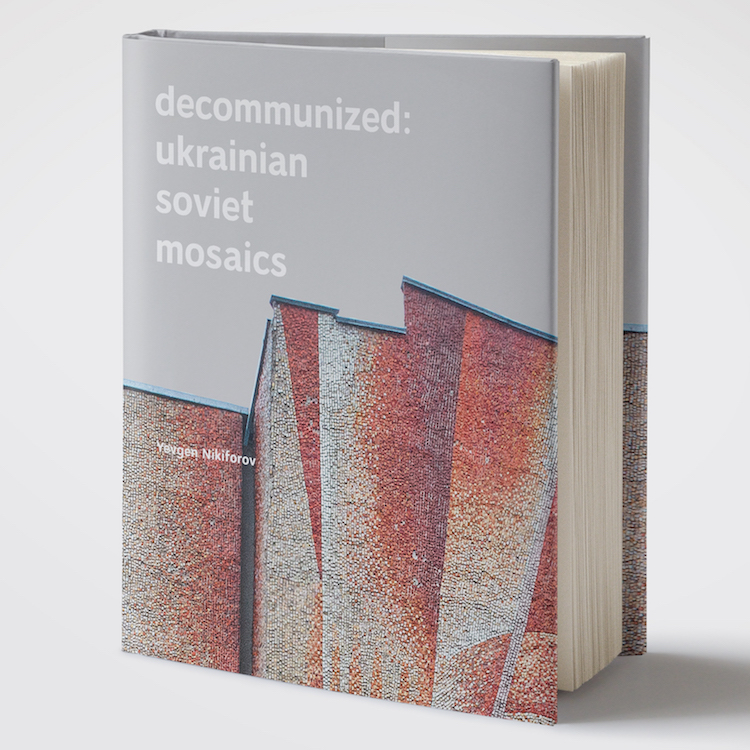During the dawn of Soviet power, the possibilities initially seemed limitless in Soviet Ukraine and art was assigned a very important role in the life of the state flourishing across every medium, including ceramics as seen in the country’s monumental mosaics. Though often dismissed as Soviet propaganda, photographer Yevgen Nikiforov argues in his new book Ukraine’s constructivist mosaics are, in fact, works of art that speak to the country’s complex history.
In his book Decommunized: Ukrainian Soviet Mosaics, Nikiforov documents more than 1,000 mosaics, and includes 200 unique photographs, presenting the first comprehensive survey of Soviet mosaics, artifacts of the cultural heritage of the era, the publisher writes.
Nikiforov spent three years traveling all around Ukraine (including the presently occupied Autonomous Republic of Crimea, Donetsk and Lugansk oblasts) in search of the most interesting art pieces of the 1950s–1980s within the context of Soviet Modernism. He covered 35,000 km of Ukrainian roads and visited 109 cities and villages to discover more than 1,000 surviving mosaics.
Hyperallergic writes each of Nikiforov’s photographs centers squarely on the mosaic piece as subject. Further framing them as artworks are details documenting each mosaic’s artist, date, location and even GPS coordinates.
Nikiforov has clearly done his research to establishing basic authorship and history.
Meticulously controlled by state propaganda which pushed work that corresponded with the historical revolution development and in line with Marxism-Leninism ideas “to involve workers in the construction of socialism” and “to claim a leading role for the Communist Party.” The works depicted Soviet life as it was meant to be represented featuring images of strong, fit workers, farmers, cosmonauts and athletes.
Hyperallergic writes, paradoxically, as much money as the state put towards hiring artists to create these mosaics, their artistic merit was never recognized, as contributors Olga Balashova and Lizaveta German note in the book’s foreword.
“Soviet monumental art failed to engage or enchant the public, both in the Soviet times and after Ukraine gained independence,” they write. “It was treated as state-commissioned propaganda, not worthy of attention.”
Even so, despite the restrictive context of their art, Nikiforov argues Ukrainian artists managed to develop a visual language that transcends the Socialist Realist canon, and their enormous designs should be appreciated and preserved. Unfortunately, some of the pieces featured were demolished shortly after the photographs were taken as recent decommunization laws outlawed communist symbology.
Do you love or loathe this book from the world of contemporary ceramic art and contemporary ceramics? Share your thoughts in the comments section below.




















We are certainly going to have a copy of this book for our growing library at London School of Mosaic.
This “lost” art form of mosaic has much to offer and needs to become mainstream in urban planning, design and building. Although the Soviet model probably did not involve much participation by the community in making their own visual landscape, mosaic as a medium will revive if we learn to encourage people to participate in the design and making process: literally transforming their own public spaces.
Been there, lived through it, such a desperation….
I am glad this book is published, but is it going to speak to its audience? You almost have to experience the mosaics through your life in order to fully understand it
Yelena
I can’t wait to get my hands on a copy. We are incredibly fortunate at Nikiforov’s obsession with this phenomenal body of work. I don’t think mosaics ever had a greater single patron than the Soviets. To have such a comprehensive catalogue is an incredible opportunity to dive deeply into the cultural and aesthetic impact of these mosaics. Thank you, Mr. Nikiforov.